Lectrosonics DBSMD Handleiding
Lectrosonics
Microfoon
DBSMD
Bekijk gratis de handleiding van Lectrosonics DBSMD (36 pagina’s), behorend tot de categorie Microfoon. Deze gids werd als nuttig beoordeeld door 27 mensen en kreeg gemiddeld 4.5 sterren uit 14 reviews. Heb je een vraag over Lectrosonics DBSMD of wil je andere gebruikers van dit product iets vragen? Stel een vraag
Pagina 1/36

DBSM/DBSMD
Digital Transcorder
DBSM-A1B1, DBSM/E01-A1B1, DBSMD-A1B1, DBSMD/E01-A1B1
INSTRUCTION MANUAL
Rio Rancho, NM, USA
www.lectrosonics.com
Fill in for your records:
Serial Number:
Purchase Date:
DBSM DBSMD

DBSM-A1B1, DBSM/E01-A1B1, DBSMD-A1B1, DBSMD/E01-A1B1
LECTROSONICS, INC.
2
Introduction
The DBSM/DBSMD transmitter employs high efficiency
digital circuitry for extended operating time on two AA
batteries. The transmitter can tune in steps across the
UHF television band from 470.100 to 607.950 MHz
(DBSM/DBSMD/E01 frequency range is 470.100 to
614.375 MHz), with a selectable output power of 10,
25 or 50 mW. A high-density transmission mode at 2
mW allows close carrier spacing for maximum channels
within a given amount of spectrum.
The pure digital architecture enables AES 256CTR
encryption for high level security applications. Studio
quality audio performance is assured by high quality
components in the preamp, wide range input gain ad-
justment and DSP-controlled limiting. Input connections
and settings are included for any lavaliere microphone,
dynamic microphones and line level inputs. Input gain
is adjustable over a 44 dB range in 1 dB steps to allow
an exact match to the input signal level, to maximize the
dynamic range and signal to noise ratio.
The housing is a rugged, machined aluminum pack-
age with a standard Lectrosonics 5-pin input jack for
use with electret lavaliere mics, dynamic mics, musical
instrument pickups and line level signals. The LEDs
on the keypad allow quick and accurate level settings
without having to view the receiver. The unit is powered
by AA batteries, and the antenna port uses a standard
50 ohm SMA connector.
Switching power supplies provide constant voltages to
the transmitter circuits from the beginning to the end of
battery life, with output power remaining constant over
the life of the battery.
Table of Contents
Introduction 2 ............................................................................
Servo Bias Input and Wiring 3 ................................................
DSP-controlled Input Limiter 3 ................................................
Recorder function 3 .................................................................
Encryption 3 ............................................................................
Compatibility withmicroSDHC memory cards 3 ....................
Features 4 ..................................................................................
Main Window Indicator ......................................................... 4
Battery Status LED Indicator 4 ...............................................
Encryption StatusLED Indicator 4 ...........................................
Battery Installation 5 ................................................................
Connecting the Signal Source 5 .............................................
Formatting SD Card 5 ...............................................................
IMPORTANT 5 ..........................................................................
iXML HEADER SUPPORT 5 ..................................................
Turning Power ON 6 .................................................................
Short Button Press 6 ...............................................................
Long Button Press 6 ...............................................................
Menu Shortcuts 6 ....................................................................
Powering Off 6 ........................................................................
Recorder Operating Instructions 6 .........................................
Setting Gain 6 .........................................................................
Recording 6 .............................................................................
DBSM/DBSMD Menu Map 8 .....................................................
Menu Screen Details 9 ............................................................
Top Menu 9 .............................................................................
Input Menu 10 ...........................................................................
Adjusting the Input Gain 10 .......................................................
Selecting the Low Frequency Roll-off 10 ..................................
Selecting Audio Polarity 10 .......................................................
Selecting LineIn/Instrument 10 .................................................
Xmit Menu 11 ..............................................................................
Selecting Frequency 11 ...........................................................
Setting Transmit Output Power 11 .............................................
RfOn? 11 ...................................................................................
Compat (Compatibility) Menu 11 ...............................................
High Density Mode 11 ...............................................................
SD Card Menu 11 ........................................................................
Recording 12 .............................................................................
Files 12 .....................................................................................
Takes 12 ....................................................................................
Setting Scene and Take Number 12 .........................................
Format 12 ..................................................................................
Recorded File Naming 12 .........................................................
SD Info 12 .................................................................................
Load Group 12 ..........................................................................
Save Group 13 ..........................................................................
TCode (Timecode) Menu 13 .......................................................
TC Jam (jam timecode) 13 ........................................................
Setting Frame Rate 13 ..............................................................
Use Clock 13 .............................................................................
IR&Key Menu.......................................................................... 13
SendAll 13 .................................................................................
GetFreq 13 ................................................................................
GetAll 14 ...................................................................................
Key Type ............................................................................... 14
Wipe Key 14 ..............................................................................
SetUp Menu 13 ............................................................................
AutoOn 13 .................................................................................
Remote 13 ................................................................................
BattType 14 ...............................................................................
Clock 14 ....................................................................................
Locking/Unlocking Changes to Settings............................... 15
DispOff 15 .................................................................................
LED Off 15 ................................................................................
Default 15 ..................................................................................
About 15 ....................................................................................
5-Pin Input Jack Wiring 16 .........................................................
Microphone Cable Termination
for Non-Lectrosonics Microphones 17 ..............................
Input Jack Wiring for Different Sources 18 ..............................
Microphone RF Bypassing 19 ...................................................
Line Level Signals 19 ................................................................
Firmware Update 20 ...................................................................
Recovery Process 21 .................................................................
Silver Paste on SM Series Transmitter Thumbscrews 22 ........
Straight Whip Antennas ........................................................ 23
Belt Clips and Pouches 24 .........................................................
DBSM Single Battery Model 24 ................................................
DBSMD Dual Battery Model 24 ................................................
Miscellaneous Accessories 25 ..................................................
LectroRM and PDR Remote 26 ..................................................
Specifications 28 ........................................................................
Troubleshooting 29 .....................................................................
Service and Repair 30 ................................................................
Returning Units for Repair 30 ...................................................
ISDEC Notice 31 ..........................................................................
Warranty 32 .................................................................................

Digital Hybrid Wireless Belt-Pack Transmitters
Rio Rancho, NM 3
Servo Bias Input and Wiring
The input preamp is a unique design that delivers
audible improvements over conventional transmitter
inputs. Two different microphone wiring schemes are
available to simplify and standardize the configuration.
Simplified 2-wire and 3-wire configurations provide sev-
eral arrangements designed for use only with servo bias
inputs to take full advantage of the preamp circuitry.
A line level input wiring provides an extended frequency
response with an LF roll-off at 20 Hz for use with instru-
ments and line level signal sources.
DSP-controlled Input Limiter
The transmitter employs a digitally-controlled analog
audio limiter prior to the analog-to-digital converter.
The limiter has a range greater than 30 dB for excellent
overload protection. A dual release envelope makes the
limiter acoustically transparent while maintaining low
distortion. It can be thought of as two limiters in series,
connected as a fast attack and release limiter followed
by a slow attack and release limiter. The limiter recovers
quickly from brief transients, so that its action is hidden
from the listener, but recovers slowly from sustained
high levels to keep audio distortion low and preserve
short term dynamic changes in the audio.
Recorder function
The DBSM/DBSMD has a built in recording function
for use in situations where RF may not be possible or
to work as a stand alone recorder. The record function
and transmit functions are exclusive of each other - you
cannot record AND transmit at the same time. When the
unit is transmitting and recording is turned on, the audio
in the RF transmission will stop, but the battery status
will still be sent to the receiver.
The recorder samples at 48 kHz rate with a 24 bit
sample depth. The micro SDHC card also offers easy
firmware update capabilities without the need for a USB
cable or driver issues.
Encryption
When transmitting audio, there are situations where
privacy is essential, such as during professional sport-
ing events, in court rooms or private meetings. For
instances where your audio transmission needs to be
kept secure, without sacrificing audio quality, Lectroson-
ics implements AES256 encryption in our digital wire-
less microphone systems. High entropy encryption keys
are first created by a Lectrosonics receiver such as the
DSQD Receiver. The key is then synced with the DBSM
via the IR port. The transmission will be encrypted
and can only be decoded if the receiver and transmit-
ter have matching encryption keys. If you are trying to
transmit an audio signal and keys do not match, all that
will be heard is silence.
Compatibility with
microSDHC memory cards
Please note that the DBSM/DBSMD are designed
for use with microSDHC memory cards. There are
several types of SD card standards (as of this writing)
based on capacity (storage in GB).
SDSC: standard capacity, up to and including 2 GB –
DO NOT USE!
SDHC: high capacity, more than 2 GB and up to and
including 32 GB – .USE THIS TYPE
SDXC: extended capacity, more than 32 GB and up to
and including 2 TB – DO NOT USE!
SDUC: extended capacity, more than 2TB and up to
and including 128 TB – DO NOT USE!
The larger XC and UC cards use a different formatting
method and bus structure and are NOT compatible with
the recorder. These are typically used with later genera-
tion video systems and cameras for image applications
(video and high resolution, high speed photography).
ONLY microSDHC memory cards should be used. They
are available in capacities from 4GB to 32GB. Look for
the Speed Class 10 cards (as indicated by a C wrapped
around the number 10), or the UHS Speed Class I
cards (as indicated by the numeral 1 inside a U sym-
bol). Also note the Logo.microSDHC
If you are switching to a new brand or source of card,
we always suggest testing first before using the card on
a critical application.
The following markings will appear on compatible
memory cards. One or all of the markings will appear on
the card housing and the packaging.
Stand-alone
Speed Class 10
UHS Speed Class 1
UHS Speed Class I
Accompanying
microSDHC logo
microSDHC Logo is a trademark of SD-3C, LLC
Product specificaties
| Merk: | Lectrosonics |
| Categorie: | Microfoon |
| Model: | DBSMD |
Heb je hulp nodig?
Als je hulp nodig hebt met Lectrosonics DBSMD stel dan hieronder een vraag en andere gebruikers zullen je antwoorden
Handleiding Microfoon Lectrosonics

28 Januari 2025

16 November 2023

16 November 2023

16 November 2023

16 November 2023

16 November 2023

15 November 2023

15 November 2023

15 November 2023

15 November 2023
Handleiding Microfoon
- Fluid
- Dimavery
- Neewer
- Nedis
- Teac
- Scope Labs
- Neumann
- Thomson
- Blue Microphones
- DJI
- Sabian
- Nuance
- Gnmano
- Adastra
- NUX
Nieuwste handleidingen voor Microfoon
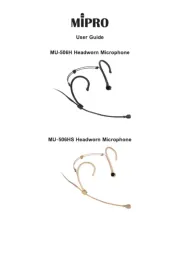
29 Juli 2025
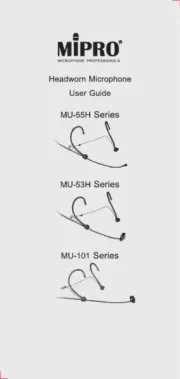
29 Juli 2025
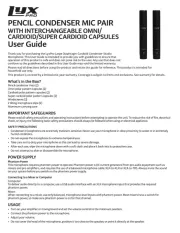
29 Juli 2025

29 Juli 2025
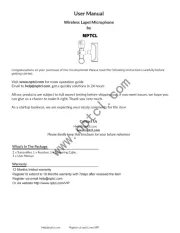
28 Juli 2025
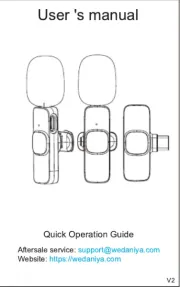
28 Juli 2025
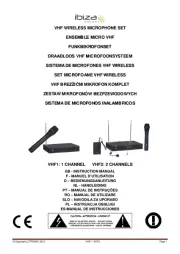
28 Juli 2025
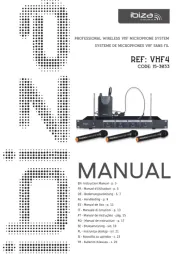
28 Juli 2025
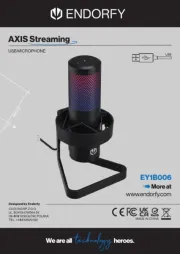
23 Juli 2025
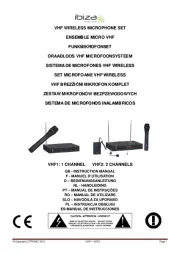
22 Juli 2025